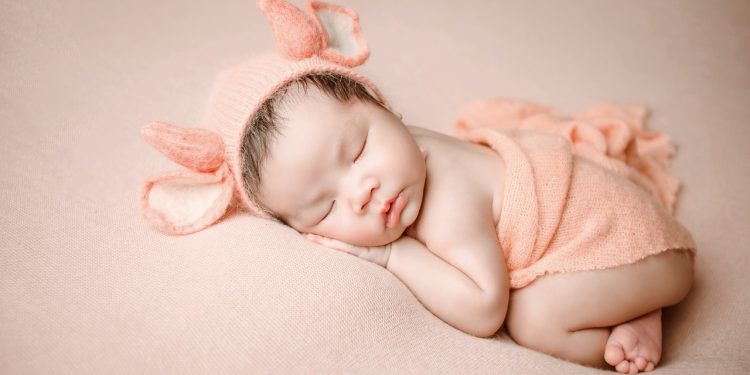For new parents, ensuring that their baby gets enough sleep is often a top priority. Good sleep is essential for a baby’s growth, development, and overall health, and creating the right sleep environment can make all the difference. A healthy sleep environment not only promotes better sleep quality but also helps reduce the risk of sleep-related issues and ensures the baby’s safety. This essay will explore how to create a healthy sleep environment for your baby, covering aspects such as room conditions, bedding, and other important safety considerations.
The Importance of a Healthy Sleep Environment
Babies spend a significant portion of their first year asleep, and the quality of their sleep is closely linked to their physical and cognitive development. A well-designed sleep environment helps babies fall asleep faster, stay asleep longer, and feel more comfortable throughout the night. It also helps reduce the risk of sudden infant death syndrome (SIDS) and promotes a sense of security that is crucial for healthy sleep habits.
Creating a healthy sleep environment involves optimizing several factors, including temperature, light, noise levels, bedding, and the safety of the sleep area. By paying close attention to each of these elements, parents can ensure that their baby’s sleep environment is conducive to restful and safe sleep.
Room Temperature and Ventilation
The temperature of your baby’s sleep environment plays a crucial role in their comfort and safety. A room that is too hot or too cold can cause discomfort and disrupt sleep. The ideal room temperature for a baby’s sleep is between 68°F and 72°F (20°C to 22°C). Maintaining a consistent, moderate temperature helps keep your baby comfortable and reduces the risk of overheating, which has been linked to SIDS.
To ensure proper ventilation, keep windows slightly open when weather permits, or use a fan to circulate air in the room. Good airflow helps maintain an optimal temperature and reduces the risk of respiratory issues. It’s important to avoid placing the baby’s crib directly under an air conditioning vent or in the path of a strong draft, as this can make the sleeping area too cold.
Lighting Considerations
Light levels play a significant role in regulating a baby’s sleep-wake cycle. Darkness signals to the brain that it’s time to sleep, while bright light signals that it’s time to wake up. During nighttime sleep, it’s best to keep the room as dark as possible to promote melatonin production, which aids in restful sleep. Blackout curtains can be helpful in blocking out external light and creating a dark, calming environment.
For nighttime feedings or diaper changes, use a soft nightlight instead of bright overhead lights. A dim light will allow you to see what you’re doing without stimulating the baby too much or disrupting their sleep. During the day, try to expose your baby to natural sunlight during wakeful periods to help regulate their circadian rhythm.
Noise Levels and White Noise
Babies are sensitive to noise, and loud or sudden sounds can easily startle them awake. Keeping the sleep environment quiet can help your baby sleep longer and more peacefully. However, total silence is not necessary, and some background noise can even be beneficial.
White noise machines can be helpful in creating a consistent, soothing sound that masks other household noises and helps your baby relax. White noise mimics the sounds that babies hear in the womb, which can be comforting and make it easier for them to drift off to sleep. If you use a white noise machine, make sure the volume is set to a safe level—no louder than a soft shower—and place it away from the crib to avoid exposing your baby to loud noises.
Safe Bedding Practices
One of the most important aspects of creating a healthy sleep environment for your baby is ensuring that their sleeping area is safe. The crib or bassinet should be free of any items that could pose a suffocation risk, including blankets, pillows, stuffed animals, and crib bumpers. Instead, dress your baby in a sleep sack or wearable blanket to keep them warm without the risk of loose bedding.
The mattress in the crib should be firm and fit snugly within the crib frame, with no gaps along the edges. Soft mattresses or gaps can pose a suffocation hazard. The fitted sheet should be tight and secure, and there should be no additional bedding or padding in the crib.
Positioning for Safe Sleep
The safest sleep position for a baby is on their back. Placing your baby on their back to sleep helps reduce the risk of SIDS and ensures that their airways remain open. It’s important to maintain this practice for both naps and nighttime sleep until the baby is old enough to roll over independently.
Once babies begin to roll over on their own, it’s okay to let them find their own comfortable sleep position, but always start by placing them on their back. It’s also important to avoid placing your baby on soft surfaces like couches or adult beds for sleep, as these can increase the risk of suffocation or falls.
Crib Safety Guidelines
The crib itself should meet current safety standards to ensure a secure sleep environment. Make sure that the crib slats are spaced no more than 2 3/8 inches (6 centimeters) apart to prevent the baby’s head from becoming trapped. Avoid using older or hand-me-down cribs that may not meet modern safety standards.
Avoid hanging heavy items, such as picture frames, above the crib, and keep cords, strings, and window blind pull cords out of reach to reduce the risk of strangulation. Position the crib away from windows, heaters, and other potential hazards to create a safe sleep space for your baby.
Establishing a Sleep Routine
A consistent bedtime routine can help create a healthy sleep environment by signaling to your baby that it’s time to wind down and get ready for sleep. A predictable routine may include a warm bath, a gentle massage, reading a book, or singing a lullaby. The goal is to create a calming sequence of activities that helps your baby relax and feel secure.
Avoid stimulating activities close to bedtime, such as loud play or screen time. Babies thrive on routine, and having a consistent bedtime routine can help regulate their sleep patterns and make it easier for them to transition to sleep.
Maintaining Comfort and Security
Babies often sleep better when they feel secure and comfortable. Swaddling can provide a sense of security for young infants who are not yet able to roll over. Swaddling helps reduce the startle reflex, which can wake the baby, and mimics the feeling of being in the womb.
As babies get older and outgrow swaddling, transitioning to a sleep sack can help provide continued comfort without the risks associated with loose blankets. Sleep sacks come in various thicknesses, allowing parents to adjust based on the room temperature to keep their baby comfortable.













